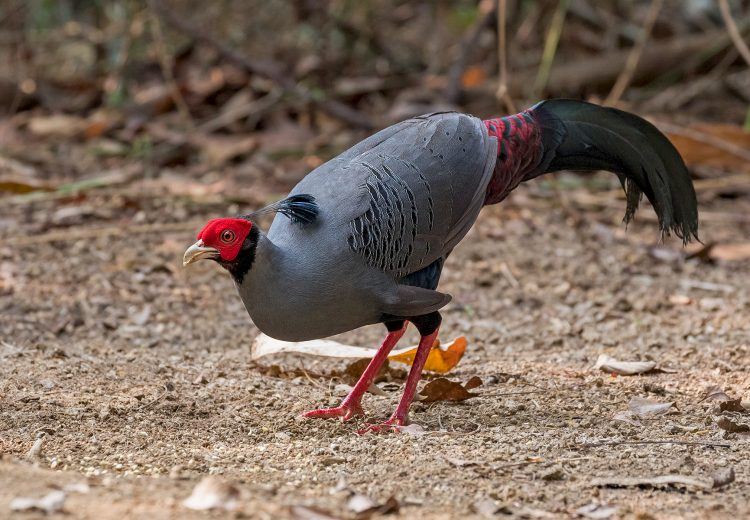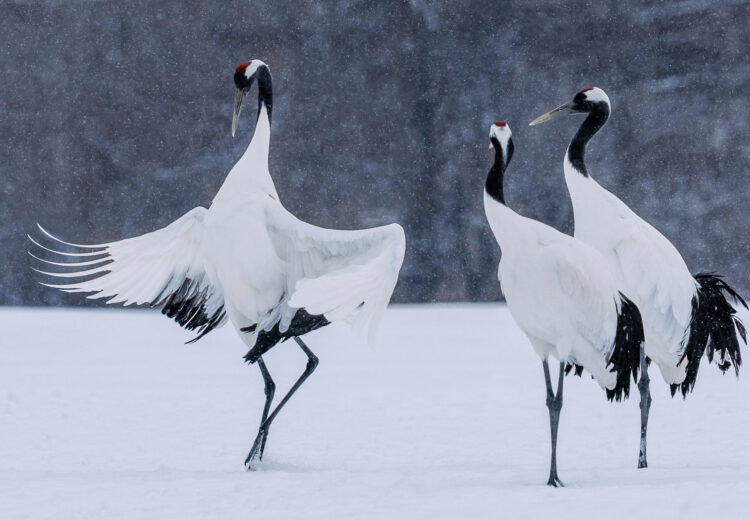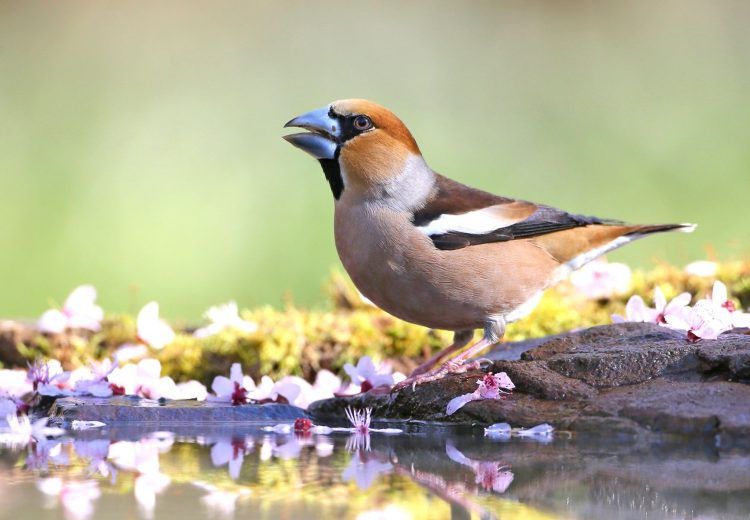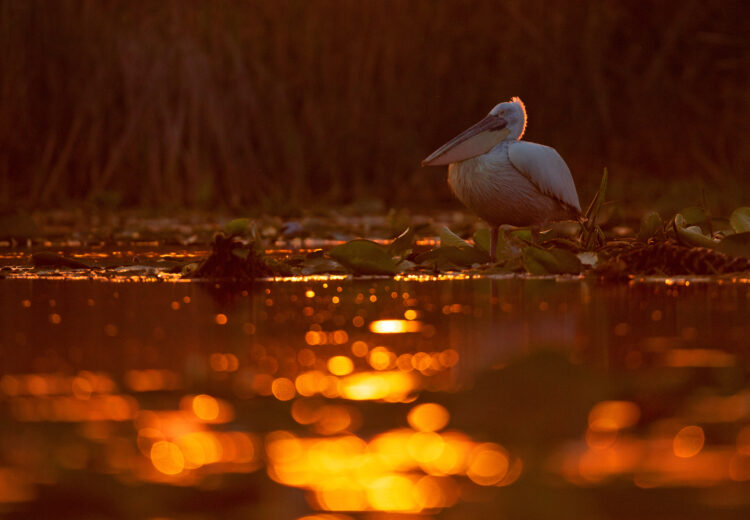United States of America
WILD ALASKA BIRD PHOTOGRAPHY – Arctic tundra birds and the seabirds of the Pribilof Islands



















































































A striking male Lapland Bunting (or Longspur) (image by Pete Morris)

Arctic Fox is common along the coast at Saint Paul Island, this female was obviously nursing cubs! (Image by Mike Watson)

The attractive local form of Grey-crowned Rosy-Finch is common on St Paul Island (image by Pete Morris)

A stunning Sabine’s Gull at Barrow (image by Dani Lopez Velasco)

A Pectoral Sandpiper starts to fluff out its breast feathers as part of its weird courtship display at Barrow (image by Pete Morris)

Parakeet Auklet is another great reason to make the journey to St Paul (image by Pete Morris)

Pacific Wren, Saint Paul Island (Image by Mike Watson)

Spectacled Eiders in the midnight sun, Utqiagvik (Image by Mike Watson)

Spectacled Eider, Utqiagvik (Image by Mike Watson)

Semipalmated Plover (Image by Mike Watson)

Red Phalarope, Utqiagvik (Image by Mike Watson)

The enigmatic Red-legged Kittiwake is very hard to catch up with elsewhere but is easy on St Paul (image by Pete Morris)

The spectacular Tufted Puffin is surely the smartest of all the seabirds on St Paul Island (image by Pete Morris)

Bluethroat adds an extra splash of colour to the Bering Tundra at Nome (Image by Mike Watson)

A gorgeous Horned Puffin at Ridge Wall, Saint Paul Island (Image by Mike Watson)

A stunning drake King Eider zooms past at Barrow (image by Pete Morris)

Rock Sandpiper is another shorebird with a wing-raising display Rock Sandpiper fills the niche of Purple Sandpiper out west in Alaska (image by Pete Morris)

We will be hoping for a beautiful adult male McKay’s Bunting on St Paul, although we will need a lot of luck to coincide with their rather sporadic appearances there (image by Pete Morris)

Close-up Sabine’s Gull (image by Pete Morris)

Tufted Puffin, Saint Paul Island, showing its fishing tackle (Image by Mike Watson)

Displaying drake Steller’s Eider (image by Dani Lopez Velasco)

King Eiders at Barrow, three of a kind! (image by Pete Morris)

Owing to its isolated position, St Paul Island attracts stray migrants like this Cliff Swallow (image by Pete Morris)

A perfect Spectacled Eider drake in flight on the tundra at Barrow (image by Pete Morris)

The rare Emperor Goose at Safety Sound, Nome (Image by Mike Watson)

The poor Least Auklet is outdone in every department by its larger cousins on St Paul but where else to see one like this? (image by Pete Morris)

Buff-breasted Sandpiper in full courtship display mode (image by Dani Lopez Velasco)

White-winged Scoters, Nome (Image by Mike Watson)

Friendly Least Auklets on Saint Paul Island (Image by Mike Watson)

Tufted Puffin, Saint Paul Island (Image by Mike Watson)

Photographing gorgeous Red Phalaropes in their chestnut breeding plumage will be one of our aims at Barrow (image by Pete Morris)

A Pomarine Jaeger up close at Barrow is an impressive sight (image by Dani Lopez Velasco)

King Eider male, Utqiagvik (Image by Mike Watson)

A fine drake Steller’s Eider at Barrow (image by Dani Lopez Velasco)

Buff-breasted Sandpiper wing raising at Barrow as part of its display (image by Dani Lopez Velasco)

Snowy Owl, male at Utqiagvik (Image by Mike Watson)

Spectacled Eider at Barrow. Getting down low with the best of all the eiders is a real bucket list experience for a bird photographer (image by Dani Lopez Velasco)

The Arctic pack ice at Barrow lingers well into the summer (image by Pete Morris)

Pacific Loon at Barrow (image by Pete Morris)

Snowy Owl in flight at Utqiagvik (Image by Mike Watson)

Spoons! A Pomarine Jaeger at Barrow (image by Pete Morris)

This Least Sandpiper probably wonders why it returned so early to Alaska (image by Pete Morris)

Tufted Puffin, Saint Paul Island (Image by Mike Watson)

The arcticola subspecies of Dunlin is pretty impressive (Image by Mike Watson)

The unique display of Pectoral (or should that be Big-breasted?) Sandpiper is worth the effort to get to Barrow alone (image by Dani Lopez Velasco)

Northern Fur Seals, Saint Paul Island (Image by Mike Watson)

Buff-breasted Sandpiper is one of the more sought after shorebirds at Barrow, occurring in variable numbers from year to year (image by Pete Morris)

Red Phalarope, Utqiagvik (Image by Mike Watson)

Willow Ptarmigan, male, Kougarok Road (Image by Mike Watson)

A smart drake Harlequin Duck on St Paul Island (image by Pete Morris)

Arctic Lousewort, Saint Paul Island - one of several species of this Arctic plant seen on the tour (Image by Mike Watson)

Horned Puffin is one of a wonderful selection of alcid species nesting on remote St Paul island (image by Pete Morris)

Crested Auklet, the most south-after alcid on Saint Paul Island (Image by Mike Watson)

On Silver Pond, Pacific Loons at Barrow (image by Dani Lopez Velasco)

The spectacular Spectacled Eider at Barrow is one of the main reasons for our pilgrimage there (image by Pete Morris)

Pomarine Jaegers are enjoying a lemming year at Utqiagvik (Image by Mike Watson)

Rock Sandpiper, Saint Paul (Image by Mike Watson)

Short-eared Owl, Saint Paul Island (Image by Mike Watson)

Red-necked Stint at Utqiagvik (Image by Mike Watson)

A Red-faced Cormorant does its best to look interesting among all the other flashy cliff dwellers (image by Pete Morris)

Steller’s Eider! The tundra pools at Barrow are one of world birding’s true meccas. (image by Dani Lopez Velasco)

A gorgeous male Steller’s Eider takes to the air from a tundra pool at Barrow! (image by Pete Morris)

Denali from the sky (Image by Mike Watson)

A male Lapland Longspur in full breeding plumage. They can be seen at both St Paul and Barrow (image by Dani Lopez Velasco)

Crested Auklets on the sea cliffs of St Paul Island (image by Pete Morris)

An eye-level Red Phalarope at Barrow (image by Dani Lopez Velasco)

Willow Ptarmigan, female, Kougarok Road (Image by Mike Watson)

The diminutive Semipalmated Sandpiper is common at Barrow (image by Dani Lopez Velasco)

Steller’s Sea Lion, Saint Paul Island (Image by Mike Watson)

Musk Ox, Nome (Image by Mike Watson)

Tiny Pacific Wrens sometimes require a little searching for on St Paul (image by Pete Morris)

Rock Ptarmigan by the Nome to Teller Highway (Image by Mike Watson)

Steller’s Eider, Utqiagvik – becoming ever scarcer (Image by Mike Watson)

Spectacled Eider drake lined up with a late snow drift by its tundra pool at Barrow (image by Dani Lopez Velasco)

Pacific Loon, Anchorage (Image by Mike Watson)

Rock Sandpiper fills the niche of Purple Sandpiper out west in Alaska (image by Pete Morris)

Surfin’ Ancient Murrelets, Saint Paul Island (Image by Mike Watson)

Long-billed Dowitcher is another of the flashy shorebird parade at Barrow (image by Pete Morris)

Pec (Pectoral Sandpiper) Wars, Utqiagvik (Image by Mike Watson)

Sabine’s Gull is one of a ‘trinity’ of High Arctic breeding gulls together with Ross’s and Ivory (image by Pete Morris)

There are usually Snowy Owls breeding at Barrow, one of the best places to catch up with them (image by Pete Morris)
|
Sunday 7th June –
Sunday 14th June 2026 Leader: Mike Watson |
8 Days | Group Size Limit 7 |
|
Nome Extension
Tuesday 2nd June – Sunday 7th June 2026 |
6 Days | Group Size Limit 7 |
|
Saint Paul Island (Pribilofs) Extension
Sunday 14th June – Friday 19th June 2026 |
6 Days | Group Size Limit 7 |
WILD ALASKA BIRD PHOTOGRAPHY TOURS WITH WILD IMAGES
Alaska has long been one of the world’s classic wildlife photography destinations and we have conducted tours there since 1999. When planning this exciting bird photography adventure, three places really stood out as destinations where we have captured way more great bird images than at any others – Barrow (Utqiagvik), Nome and St Paul Island in the Prilofs group. All of these locations repay spending more time photographing and neither Barrow nor St Paul involves much land travel, while all three offer a ‘to the ends of the earth’ experience surrounded by birds.
On the shores of the Beaufort Sea on the north slope of Alaska lies the tiny city of Barrow, or Utqiagvik to use its proper Iñupiat name, which was approved as the town’s new name by referendum as recently as 2016. The name Barrow dates from 1825 and derives from Sir John Barrow of the British Admiralty, who was not even the first non-native person to visit the place, it was named in his honour by explorer Frederick William Beechey. At 71 degrees north, nearby Point Barrow is the USA’s northernmost piece of land and extends into the Arctic Ocean to the east of the Bering Strait. Its population is little more than a very small town in the rest of the USA but it has been settled for more than 1,500 years by the Inuit.
Among wildlife enthusiasts, Utqiagvik is best known as the most accessible place in the world to find the truly spectacular Spectacled Eider (as well as Ross’s Gull if you are very lucky, although they are regular in autumn). As if this was not enough it also offers a chance to see a number of other super flashy eiders that are difficult to get to in neighbouring Russia and Arctic Canada like King Eider and Steller’s Eider. In fact, all four species of eiders can be seen easily at Utqiagvik!
Arctic breeding shorebirds can be seen in display here, including Pectoral Sandpipers, Long-billed Dowitchers and Semipalmated Sandpipers as you have never seen then before! Pectoral Sandpipers inflate their breasts and make weird booming calls and if we are lucky we will even see the peculiar wing raising display of Buff-breasted Sandpiper, although their numbers at Utqiavik vary from year to year. We should also find Snowy Owl and Pomarine Jaeger breeding here, although their presence varies from year to year with the state of the lemming population. They all make great photo subjects and are well worth making the effort to travel to this end of the earth to see them. We will spend almost a week at Utqiavik to allow plenty of time to get the images of its special birds we are hoping for and also to allow some contingency for bad weather. Foggy and dull overcast weather is common here at this time of year owing to the prevailing easterly wind.
Additionally, a good number of other more widespread Arctic breeding birds light up the tundra at Utqiagvik including Long-tailed Duck, Greater White-fronted Goose, Pacific and Red-throated Loons, American Golden and Semipalmated Plovers, Semipalmated Sandpiper, Long-billed Dowitcher, Red-necked and Red Phalaropes, Parasitic Jaegers (or Arctic Skuas), the superb Sabine’s Gull, Common and Arctic (or Hoary) Redpolls, Lapland Longspur and Snow Bunting. It is quite simply the best location for Arctic birds in the world.
During the optional pre-tour extension we shall travel far to the northwest of Anchorage to the remote settlement of Nome, a tundra town not far from the Bering Strait that came into being as people flocked to the area in search of gold. It is now well known as the finishing point for the most famous dog sledging race in the world, the Iditarod Trail.
The Nome area is one of the best places in the world to see the rare and elusive Bristle-thighed Curlew. We will devote some of our time to photographing these attractive birds, but there are many other great photographic targets around Nome including a really superb selection of other shorebirds, many in their fabulous breeding dress, including American Golden, Pacific Golden, Grey (or Black-bellied) and Semipalmated Plovers, Red Knot, Western and Semipalmated Sandpipers, Bar-tailed Godwit, Ruddy Turnstone, Hudsonian Whimbrel, Wilson’s Snipe and possibly Red-necked Stint.
Other targets here include Pacific Loon, Tundra Swan, Long-tailed Duck, Rough-legged Hawk (or Rough-legged Buzzard), Golden Eagle, Sandhill Crane, Short-billed and Glaucous Gulls (and chances for Sabine’s, Vega and Slaty-backed Gulls), the handsome Aleutian Tern, Arctic Tern, Short-eared Owl and even Gyr Falcon,
The passerine birds include Eastern Yellow Wagtail, Buff-bellied (or American) Pipit, the gorgeous little Bluethroat, Northern Wheatear, Grey-cheeked Thrush, Arctic, Blackpoll and Orange-crowned Warblers, and American Tree, White-crowned and Golden-crowned Sparrows.
At this time of year, migration will still be continuing, with numbers of wildfowl and shorebirds heading further north to their breeding grounds.
Among the mammals, the big attraction here is that marvellous ice-age relic, the shaggy Musk Ox. It is often possible to get good photos, with a bit of luck and persistence. Grizzly Bear, Caribou (Reindeer) are also in the area, as are American Beavers.
During the optional post-tour extension, which can be taken as a short photo tour in its own right, we will explore Saint Paul Island, a small island that forms part of the Pribilof Islands group, situated far out amidst the Bering Sea.
St Paul Island is home to one of the most outstanding marine wildlife spectacles in North America. Here, far out in the Bering Sea, we will enjoy the excitements of one of the world’s greatest seabird gatherings, including the highly localized Red-legged Kittiwake as well as more widespread North Pacific birds such as Red-faced Cormorant, Horned and Tufted Puffins, and Crested, Parakeet and Least Auklets, often at close range on their breeding cliffs. The rocky tundra of the interior of the island holds breeding Rock Sandpiper and Grey-crowned Rosy Finch, as well as Snow Buntings and Lapland Longspurs. The island is also famous for attracting regular vagrant birds from Asia at this time of year and there is a long list of possibilities! Very occasionally the smart McKay’s Bunting wanders to the island.
Accommodation & Road Transport
The hotels in Anchorage, Utqiagvik (Barrow) and Nome are of a good standard. On St Paul Island in the Pribilofs, the hotel is comfortable but bathroom facilities are shared. Road transport is by minibus and roads are mostly good (but unsurfaced and sometimes rough in remote areas).
Walking
The walking effort during our Alaska bird photography tour is predominantly easy, although there may be some wading in shallow water on the tundra. The long daylight hours tend to result in long days in the field. (For those taking the Nome extension, there is a moderate uphill hike over uneven tundra to photograph Bristle-thighed Curlew, but otherwise the Nome area walking is not demanding.)
Climate & Clothing
The weather at this season in Alaska is very unpredictable. Conditions may range from cool (Anchorage can even be warm) to cold. Dry and sunny periods will be interspersed with overcast and rainy or even snowy weather. Fog is also possible, especially at Utqiagvik (Barrow) and St Paul.
Photographic Equipment
During our Alaska photography tours, the most used telephoto lens focal lengths with a full-frame DSLR or mirrorless are usually between 500-600 mm (sometimes even longer is useful). Focal lengths of 200-300 mm can, however, be useful for some wildlife shots and some scenic photography.
All the focal lengths mentioned above relate to full-frame cameras. Please adjust as appropriate for crop sensor and micro four-thirds cameras.
You can also get wonderful results throughout this photography tour, with many subjects, with a high quality ‘bridge’ camera with an 18-20x or higher optical zoom and a wide-angle setting which is equivalent to 24mm.
A tripod can be a heavy burden on this tour as there is some walking and a monopod can be helpful if you use a heavy telephoto.
If you have questions about what equipment you ought to bring, please contact us.
VIEW OUR GUEST’S PHOTOS
At Wild Images we are often asked about bringing young photographers on tour and what age of young photographer can join us. In 2023 we had the absolute pleasure of hosting young wildlife photographer Joseph Priniotakis on our Wild Alaska Bird Photography Tour. Aged just 13 years old at the time he travelled, he produced a wonderful portfolio of images that showed an ability beyond his young years. He kindly allowed us to publish a portfolio of his beautiful images here, proving to the world that stunning wildlife photography has no age limit.
Photographic Highlights
- Awesome drake Spectacled Eiders on their tundra breeding pools at the best place in the world to photograph them. Worth the long journey to Utqiagvik (Barrow) alone!
- Drake King and Steller’s Eiders, also looking their smartest at this time of year, cavorting around the tundra pools in pursuit of a mate during the Utqiagvik (Barrow) ‘eiderfest’.
- Snowy Owls perch sentinel-like on prominent perches over the tundra at Utqiagvik (Barrow).
- The ultra-smart Sabine's Gull, surely one of the best gulls to photograph in the world.
- Pomarine Jaegers usually breed in small numbers at Utqiagvik (Barrow) and can be found loafing on the tundra or on patrol.
- A spectacular array of Arctic shorebirds at Utqiagvik (Barrow) is headlined by the bizarre ‘booming’ display of male Pectoral Sandpipers, flying around with inflated breasts.
- Spinning Red and Red-necked Phalaropes on the tundra pools, both in gorgeous breeding plumage.
- Yellow-billed Loons (or White-billed Divers), in outrageous checker-board breeding plumage, sometimes appear on large tundra pools at Utqiagvik (Barrow).
- Close encounters of the seabird kind on St Paul, including the pretty but rare Red-legged Kittiwakes nesting on the sea cliffs or bathing in the pools.
- Photographing Tufted Puffins sporting ridiculously wavy ‘comb-over’ hairstyles that flap about in the wind.
- Snaky-necked Red-faced Cormorants sit alongside Horned Puffins and Parakeet Auklets on St Paul’s seabird cliffs
- Photographing the busy comings and goings of Crested and Least Auklets at their boulder-scree colonies.
- The rare Rock Sandpiper displaying on the St Paul tundra or feeding in nearby coastal inlets.
- Stunning Grey-crowned Rosy Finches, sometimes even near our accommodation on St Paul.
- Smart, breeding-plumaged male Snow Buntings and Lapland Longspurs are ubiquitous on St Paul.
- The wonderfully primordial-looking Musk Ox on the tundra inland from Nome.
- For those willing to hike, the opportunity to see and photograph the rare Bristle-thighed Curlew.
- Lovely Red-throated and Pacific Loons on the lagoons.
- A marvellous selection of breeding-plumaged shorebirds at Nome including American Golden Plover, Grey (or Black-bellied Plovere) and Red Knot
- The handsome Aleutian Tern, one of the 'smartest' of all the terns.
- The lovely Bluethroat and the perky Blackpoll Warbler sionging away from the arctic willows.
OUTLINE ITINERARY
- NOME PRE-TOUR EXTENSION
- Day 1: Evening tour start at Anchorage.
- Day 2: Morning flight to Nome. Afternoon in Nome area.
- Days 3-5: Exploring the Nome area.
- Day 6: Nome area, then fly back to Anchorage.
- MAIN TOUR
- Day 1: Evening tour start at Anchorage.
- Day 2: Morning flight to Utqiagvik (Barrow). Afternoon at Barrow.
- Days 3-6: Exploring Utqiagvik (Barrow) area.
- Day 7: Morning at Barrow. Fly back to Anchorage for overnight.
- Day 8: Morning tour end at Anchorage.
- ST PAUL ISLAND (PRIBILOFS) EXTENSION
- Day 1: Fly to St Paul Island.
- Days 2-4: Exploring St Paul Island.
- Day 5: St Paul, then fly back to Anchorage for overnight.
- Day 6: Morning tour end at Anchorage.
To see a larger map, click on the square-like ‘enlarge’ icon in the upper right of the map box.
To see (or hide) the ‘map legend’, click on the icon with an arrow in the upper left of the map box.
To change to a satellite view, which is great for seeing the physical terrain (and for seeing really fine details by repetitive use of the + button), click on the square ‘map view’ icon in the lower left corner of the ‘map legend’.
PRICE INFORMATION
Wild Images Inclusions: Our tour prices include surface transportation, accommodations, meals and entrance fees.
Our tour prices also include all tips for local guides, drivers and accommodation/restaurant staff.
Our tour prices also include these flights: Anchorage-Barrow-Anchorage, Anchorage-Nome-Anchorage and Anchorage-St Paul’s Island (Pribilofs)-Anchorage. These flights are very expensive, especially the Pribilofs flights.
Deposit: 20% of the total tour price. Our office will let you know what deposit amount is due, in order to confirm your booking, following receipt of your online booking form.
TO BOOK THIS TOUR: Click here (you will need the tour dates)
2026: provisional £3580, $4690, €4310, AUD7080. Anchorage/Anchorage.
Nome Extension: £2660, $3490, €3210, AUD5260. Anchorage/Anchorage.
Saint Paul Island (Pribilofs) Extension: £4270, $5590, €5140, AUD8440. Anchorage/Anchorage.
Single Supplement: 2026: £580, $760, €690, AUD1140.
Nome Extension: £420, $550, €500, AUD830.
Saint Paul Island (Pribilofs) Extension: £520, $690, €630, AUD1040.
If you are travelling alone, the single supplement will not apply if you are willing to share a room and there is a room-mate of the same sex available.
This tour is priced in US Dollars. Amounts shown in other currencies are indicative.
Air Travel To & From The Tour: Our in-house IATA ticket agency will be pleased to arrange your air travel on request, or you may arrange this yourself if you prefer.
WILD ALASKA BIRD PHOTOGRAPHY TOUR: DETAILED ITINERARY
Wild Alaska: Day 1 Our tour begins this evening in Anchorage, where we will stay overnight.
Wild Alaska: Day 2 This morning we will fly northwards, crossing the Arctic Circle, the impressive Brooks Range and the vast tundra of Alaska’s North Slope en route to the tiny city of Barrow, now renamed Utqiagvik (the Inuit name for the place), for a five nights stay beside the Arctic Ocean.
If the weather is clear we should enjoy some fantastic views as we fly over vast areas of unspoilt wilderness. As we approach Utqiagvik we will pass over a flat tundra landscape dominated by a honeycomb pattern of huge ice-wedge polygons that have been formed by the endless annual cycle of the thawing and freezing of the permafrost. Here at more than 71°N latitude the sun does not set for nearly three months in summer (although the frequent arctic fog may make us forget that this is the ‘Land of the Midnight Sun’!), while in the icy depths of winter it stays below the horizon for just as long.
Our programme at Utqiagvik will be determined by the annual thaw and the ability to access the tundra pools inland, where most of our photographic targets breed. For instance, the unpaved roads to the interior usually only become passable in early June. We will begin our exploration this afternoon. Utqiavik experiences a polar desert climate on top of the 400m deep permafrost below it and inland of the city the flat tundra extends for more than 300km. There is less than 5 inches of rainfall per year and almost half of the year sees temperatures of less than 0 degrees Fahrenheit! However, falling as snow one inch of rain equates to a foot of snow! In winter the city is only linked to the rest of the world by air, there are no roads connecting it with the rest of Alaska.
Wild Alaska: Day 3-6 Today we will explore various places in the Utqiagvik area, taking advantage of the continuous daylight at this time of the year! The tundra at Utqiagvik is particularly rich in breeding wildfowl and shorebirds and by now the surface ice will have begun to melt, forming pools which lie on top of the permafrost. At this season the tundra is alive with the sights and sounds of displaying ducks and waders whilst menacing skuas patrol back and forth.
Our main target here will be the gorgeous, though sadly fast-declining, Spectacled Eider and we will make a big effort to locate newly returned drakes on their tundra ponds. We will also be keenly scanning the tundra that they share with beautiful King and Steller’s Eiders as well as that truly arctic predator, Snowy Owl. The populations of many arctic predators fluctuate enormously in parallel with the cyclic changes in the lemming and vole populations. These small rodents, known for their boom and bust cycles which take place once every four to five years, are the main food source for many of the birds and mammals here in the far north.
Amongst the other interesting species we can expect to find during our forays at Barrow are Greater White-fronted Goose, Baird’s, Buff-breasted (in some years) and Pectoral Sandpipers, Long-billed Dowitcher, Red and Red-necked Phalaropes (both in their splendid red breeding plumage) and Pomarine Jaeger. We also have a chance of seeing Sabine’s Gull, although this species is sometimes absent until later in the summer.
A number of shorebird species are breeding at the extreme limit of their range in the Barrow area and therefore occur in fluctuating numbers from one year to the next (and so are of unpredictable occurrence). These include Grey Plover, Sanderling, White-rumped Sandpiper and Ruddy Turnstone. If there are open leads in the ice close inshore while we are at Barrow we will also have a fair chance of photographing the uncommon Yellow-billed Loon, more often than not in flight while they travel between their feeding and nesting areas.
We even have a small chance of seeing Polar Bears on the sea ice if there happen to be some hanging around Barrow Point into the summer.
Wild Alaska: Day 7 After a final morning at Utqiagvik we will take a flight to Anchorage for an overnight stay.
Wild Alaska: Day 8 Our tour ends this morning at Anchorage.
NOME PRE-TOUR EXTENSION
Wild Alaska (Nome): Day 1 Our tour begins this evening in Anchorage, where we will stay overnight.
Wild Alaska (Nome): Day 2 This morning we will fly westwards to the remote town of Nome, situated on the Bering Sea coast, for a four nights stay. This afternoon we shall begin our exploration of the Nome region.
Wild Alaska (Nome): Days 3-5 Situated on Norton Sound on the Bering Sea coast, Nome is a Mecca for bird photographers in search of Arctic specialities. We will use the three roads leading out of the town and explore the varied habitats in search of some of North America’sand the wider Arctic’s very best birds.
Bounded by tundra on three sides and the Bering Sea coast on the other, the small estuary and lakes at the edge of town attract many waterbirds including the stately Sandhill Crane, Semipalmated Pacific Golden and Grey (or Black-bellied) Plovers, Western and Semipalmated Sandpipers, Wandering Tattler, Surfbird, Ruddy Turnstone and sometimes Red-necked Stint and Vega and Slaty-backed Gulls (the latter often amongst the many Glaucous Gulls). We will drive along the coast towards Safety Sound, where birds pause whilst the ice further north breaks up. The dainty Sabine’s Gull turns up regularly here on migration and even Emperor Goose on rare occasions.
More commonly encountered birds we can expect to find in this fine area include Pacific and Red-throated Loon (or Red-throated Diver), Tundra Swan, Black Brant, Common Eider, the beautiful Harlequin Duck, Surf, Black and White-winged Scoters, Long-tailed Duck, Arctic Tern, the elegant and much-sought-after Aleutian Tern and the smart Lapland Longspur (or Lapland Bunting).
We will drive along the famous Kougarok Highway in search of one of the world’s least-known birds, the Bristle-thighed Curlew, which is currently under study by the United States Fish and Wildlife Service. We will devote part of the day to finding and photographing this rare species which shares its habitat with the more common and very similar Hudsonian Whimbrel (sometimes treated as a separate species from the Eurasian forms).
During our drive along the Kougarok Highway, we will pass through the scenic Kigluaik Mountains. The many cliffs here provide nesting habitat for a number of raptors including Golden Eagle, Rough-legged Hawk (or Rough-legged Buzzard) and the magnificent Gyr Falcon.
Other breeding birds of the Nome area, many of which are desirable photographic targets, are Peregrine Falcon, Rock and Willow Ptarmigans, American Golden Plover, Red Knot, Bar-tailed Godwit, Red-necked Phalarope, Long-tailed and Parasitic Jaegers (or Long-tailed and Arctic Skuas), Short-billed Gull, Arctic Tern, Short-eared Owl, Grey-cheeked Thrush, American Tree, Red Fox, White-crowned and Golden-crowned Sparrows, and Hoary (or Arctic) and Common Redpolls. Several primarily Eurasian passerines nest locally in Alaska, including Alaska Wagtail (the local form of the Eastern Yellow Wagtail complex), Bluethroat and Northern Wheatear. Bluethroats singing away in the willows make for a wonderful subject.
We should also find and photograph the extraordinary Musk Ox (which is sometimes present in good numbers and sometimes lets one get pretty close!), as well as Caribou (or Reindeer) and American Beaver. Grizzly Bear is also present in the area and is seen fairly regularly.
Wild Alaska (Nome): Day 6 After a last morning around Nome we will fly back to Anchorage, where we join up with anyone arriving for the Utqiavik (Barrow) section of the tour.
SAINT PAUL ISLAND (PRIBILOF ISLANDS) EXTENSION
Wild Alaska (St Paul): Day 1 This morning we will take a flight to St Paul Island, situated some 800 miles (1300 km) from Anchorage in the Pribilofs, where the largest remaining Aleut population in the world resides. Situated amidst the cold waters of the Bering Sea, these islands are home to some three million seabirds! Upon our arrival in mid-afternoon, we will be transferred to the King Eider Hotel, our base for the next four nights. Later we will set out by minibus/passenger van to begin our explorations of the island.
Wild Alaska (St Paul): Days 2-4 The Pribilofs offer a seabird spectacle, which has made them world-famous amongst bird photographers.
During our stay, we will spend plenty of time at most of the best seabird cliffs on St Paul. At Reef Point, not far from the settlement, the cliffs often teem with seabirds. Northern Fulmars, Black-legged Kittiwakes and hordes of puffins, auklets, guillemots and cormorants seem to occupy every available piece of rock. Every inch of space is claimed by nesting birds and by carefully searching the cliffs we should gain fantastic views of all of the nesting auks. Common and Thick-billed (or Brünnich’s) Murres and diminutive Least Auklets are abundant, whilst bizarre Crested Auklets and Parakeet Auklets are much in evidence and comical Horned and Tufted Puffins are constantly travelling to and from their breeding ledges, some within easy reach of our cameras. A few Pigeon Guillemots breed at St Paul, mainly below the cliffs, and the smart Ancient Murrelet can sometimes be seen quite closely.
Very important bird photography opportunities here will include the beautiful, restricted-range Red-faced Cormorant and the extremely localized Red-legged Kittiwake (which only breeds here and on a few other islands in the Aleutian and Commander Islands chain).
Arctic Foxes, here of the Pribilof subspecies, which remains largely dark even during the winter, will be keeping a close eye on us from their dens close to the bird cliffs. We will also have the opportunity to visit large Northern Fur Seal colonies where we will be able to admire some large bulls at very close range, their incredible barking calls ringing through the air.
Almost anywhere on the island, we can expect to find Grey-crowned Rosy Finch, the handsome Lapland Longspur and the Pribilof form of the Pacific Wren. Salt Lagoon and the freshwater lakes and marshes are likely to produce various wildfowl and shorebirds, including Long-tailed Duck, Semipalmated Plover and Least Sandpiper. At this time of year, there is always the chance of an Asiatic stray, such as a Long-toed Stint or Grey-tailed Tattler, overshooting from Siberia. Salt Lagoon attracts large numbers of the local Glaucous-winged Gulls and sometimes lingering Glaucous Gulls, while the striking King Eider regularly lingers into summer. Landbird vagrants from both North America and Asia also occur here and could include a surprise or two.
In the southwestern part of the island, we can visit more seabird cliffs where beautiful Harlequin Ducks are commonly seen offshore and if we are in luck they will be within range of our cameras. We can expect to have close up encounters with many of the alcid (or auk) species, and enjoy wonderful photographic opportunities. Another of the speciality birds we will want to photograph here is the Pribilof race of the restricted-range Rock Sandpiper, which nests on the dry tundra.
In addition, the beautiful McKay’s Bunting, a species restricted to just a few islands in the Bering Sea, sometimes occurs as a wanderer on St Paul. In the last decade or so there had been just a handful of late spring records, until 2019 when it enjoyed a return towards previous numbers.
Wild Alaska: Day 5 After a final morning on St Paul we will take a flight back to Anchorage Airport for an overnight stay.
Wild Alaska: Day 6 Our tour will end this morning at Anchorage Airport.
Wild Alaska Bird Photography Tour Report 2023
by Mike Watson
The name Alaska is derived from the Aleut name ‘Alyeska’, meaning ‘Great Land’, and there is indeed a lot of it! In fact, at 663,300 square miles, its area is larger than the next three US states combined (Texas, California and Montana)! Flying over the state on this tour, we got a great impression of […]
View Report
Other Wild Images Tours particularly good for bird photography
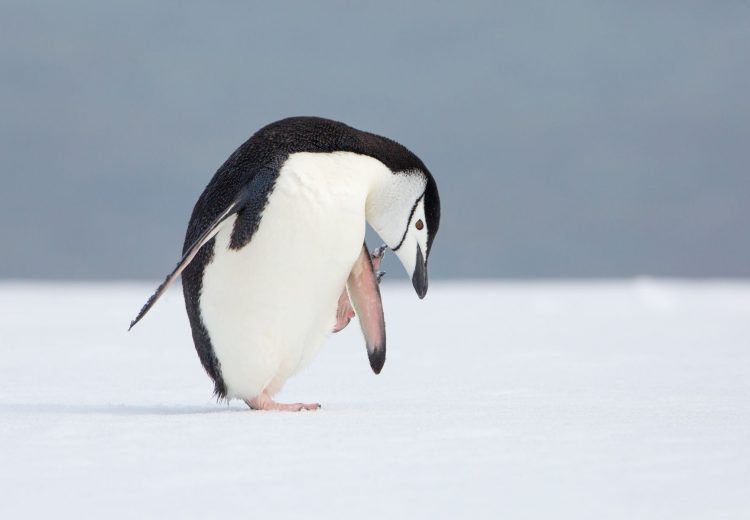
Falkland Islands & South Georgia
November-December 2024
ANTARCTICA, FALKLAND ISLANDS & SOUTH GEORGIA: Photography on a different planet
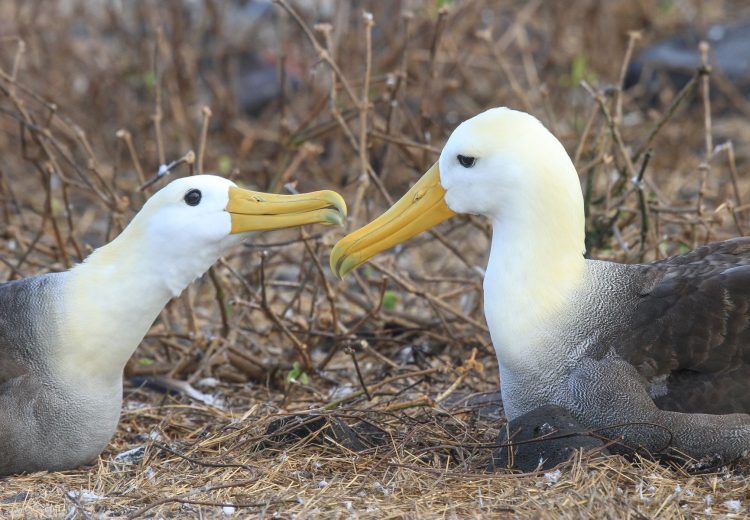
South America (including Galapagos)
May 2025
GALAPAGOS ISLANDS: Extraordinary wildlife photography in the footsteps of Darwin
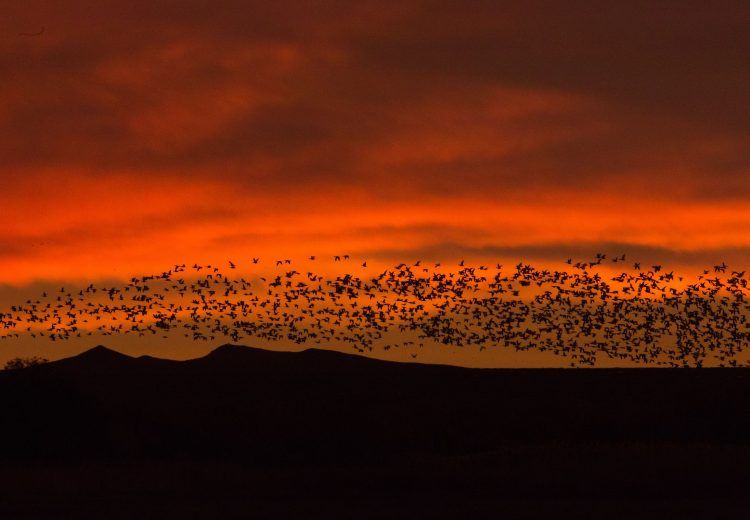
United States of America
December 2025




















































































